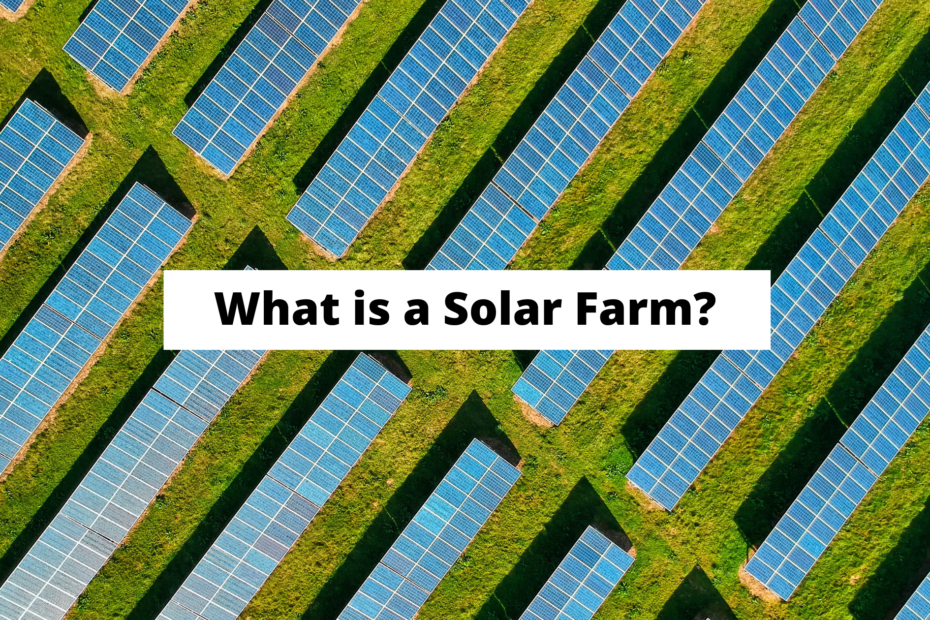Some or all of the products featured here are from partners who compensate us. These partnerships may influence which topics or products we cover but do not influence our reviews. Money Armada is an independent publisher.
Solar farms, also known as solar parks, plants, or power stations, operate much like traditional fossil-fueled power plants. These farms generate electricity—and profits—for owners. Understanding what a solar farm costs can help you determine whether it’s a reasonable investment for your portfolio.
Keep reading to learn more about solar farm costs, their setup, and benefits.
What is a solar farm?
Solar farms are usually large, ground-mounted installations. They typically harness and collect solar energy through photovoltaic panels. This is converted to electricity and supplies energy to the power grid.
Solar farms shouldn’t be confused with consumer-ready, roof-mounted solar panels. Solar farms are much larger. They may be decentralized, and they cover significantly more open land than consumer solar panels. In turn, they generate more electricity and profits for their owners.
Solar farms may be large, community based or utility scale farms. Owners harness the economies of scale in order to purchase large amounts of solar panels. Eventually, the farm generates enough clean electricity to pay for the panels and turn a profit.
How much do solar farms cost to install?
The cost of installing a solar farm depends on its size. Typically, they cost between 89 cents and $1.01 per watt to install—not counting the land it sits upon. If you go by these prices, a solar farm capable of generating one megawatt of electricity will cost somewhere between $890,000 to $1.01 million. This is much cheaper than rooftop residential solar panels, which cost around $3 per watt.
If you don’t already own the land, you’ll need to factor that into your calculations. A one-megawatt solar farm needs about six to eight acres of land. This should account for the space needed between panels, as well as equipment like inverters. Depending on the cost of land in your area, this may not be a cost-effective proposition.
Finally, don’t forget to take time into account. While building the actual farm can be completed in months, siting and permitting issues can drag out the process for years. However, once the farm is installed and connected to the grid, you’ll only need to service the panels about three or four times per year.
How much money can a solar farm generate?
A one-megawatt solar farm can earn about $40,000 per year when you sell the electricity it generates. However, it’s important to note that the amount of solar power production and the going rate for solar power can cause this figure to vary significantly.
On the other hand, if you own land, you can lease it for solar farms. Landowners who lease property for solar farms often make anywhere between $250 to $3,000 per acre, per year.
Invest in Farmland
Platform | Min. Investment | Investments | Pros | Link |
 | $8,000 | U.S. Farmland | Competitive Returns | |
 | $15,000 | West Coast U.S. Farmland | Access to a secondary market | |
 | $30,000 | South American Farmland | Open to non-accredited investors |
Types of solar farms
There are two main types of solar farms: utility scale and community solar. Utility scale solar farms sell their electricity to utility companies, and community solar farms sell directly to households and businesses. Utility scale solar farms are typically much larger than community farms.
Community farms allow people to purchase a share of the farm and the energy it produces. It’s a great compromise for people who want to use clean electricity, but don’t want to (or can’t) put solar panels on their own roof. These farms are often situated on several acres, in a field, which can capture the full benefit of the sun without interference from buildings, trees, or other sources of shade. Often, community solar subscribers receive electric bill credits for their share of the solar energy the farm generates.
Utility scale solar farms, on the other hand, are usually larger than community solar farms. The panels may be purchased by the farm owners, or leased from a utility company who sends the electricity to their grid. In turn, the energy produced can be sold to wholesale buyers or to the utility company’s residential, commercial, and industrial customers.
Should you invest in a solar farm?
The costs of a solar farm are much cheaper than installing individual residential solar panels, making them a good investment for many companies, developers and municipalities. If you already own the land, it’s a cost-effective way to generate extra money and clean power. Based on the cost of fossil fuel utilities—both financial and climate-related—it’s a smart investment for the future.
While the typical solar farm costs around $1 million to install, the demand for clean energy won’t abate anytime soon. Landowners who invest in solar energy can expect their purchase to pay off in time. As long as you remember to factor in all the associated costs, including the time it will take for the investment to pay off, it’s a great way to put your land to work and promote a healthier planet.
